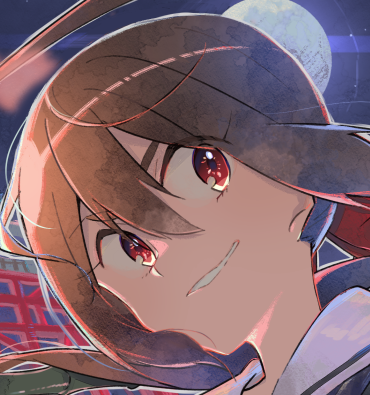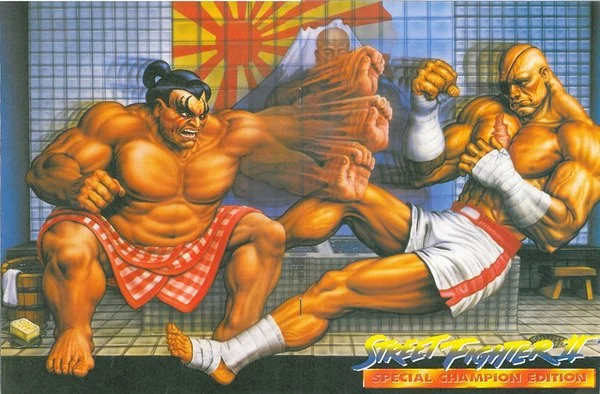Interesting that in the title, stated in absolute terms in the text, and from the designers they interviewed, they cite getting lost as crucial for the genre. Personally, I disagree. Getting lost has tended to be why I didn’t care for certain games in this genre, like Axiom Verge, and it soured my otherwise higher opinion of games like Hollow Knight and Symphony of the Night. Still, I think this is a good exploration of the genre and what makes it tick.
I’m bookmarking this link so I can read it when I have the time. Having said that, it should be clear that I haven’t read the article, yet.
For me personally, 80’s and 90’s 2D Metroid and Castlevania games were fun, but for me, something transcendental happened with the release of Castlevania: Symphony of the Night. I’m 100% certain that I am incapable of truly putting it into words, but I’m sure a myriad of people have done it, and done it far better than I ever could. I bought the game on a whim because I enjoyed Castlevania 3 on the NES so much. Other than fighting games, 2D games were basically blasé for 90’s 32-bit systems like the original PlayStation. Truthfully, I’m having a hard time recalling at the moment why I decided to buy the game. But I’m absolutely 10010% sure it was a good idea and I’m honestly thankful to my teenage self for that decision.
Modern Metroidvanias are fun, too. Truth be told, I gave up on Hollow Knight. I’m a patient, older gamer, so maybe that comes into play. But it eventually got to a point where it simply wasn’t fun anymore. I was confused about what I needed to do next and I wasn’t making any progress in the game. And then I had to set it aside for almost a year. When I tried to return, my memory had faded to the point where I really struggled to play it and make progress. That made me immensely sad. Once I realized that, I simply set it aside.
On the other hand, I played all the Nintendo DS Castlevania Metroidvania games back in the day and even still own the original cartridges. Via Steam, I also played the Gameboy Advanced Castlevanias. They are so much fun for me. So much fun that I purchased the Dominus collection on Steam, which is essentially all the DS games that I already own.
I also played Bloodstained: ROTN. I know there’s a lot of criticism about the game, but I’ll be honest, I loved every freakin’ minute of it. I wasn’t a huge fan of the graphics, but the game play was exactly what I needed at the time and I don’t regret that purchase one bit.
And to finalize things, nice to meet other Metroidvania lovers. We might not all agree on the nitty-gritty details, but it’s still neat to hear from others. Back in the 90s when I was absolutely in love with SOTN despite the fact that everybody else was hating on it entirely because it’s a “2D platformer”, it was hard to imagine that ~30 years later there would be entire communities of people who love these types of games.
Man…I had the same experiences as you with Castlevania games and loved the hell outta Bloodstained. Wish I had more to add but wanted to at least high five lol
High five back at you, my friend.
Blaster Master was an underrated metroidvania. I’m a little bummed they didn’t mention that in the article.
I’ve heard them called “search-action” games before, for people who dislike “metroidvania.”
I’m never sure where to draw the line with metroidvanias. Does Dark Souls count as metroidvania? or Link’s Awakening? Cave Story?
I count Dark Souls as a Metroidvania in my head, honestly.
But I think the actual defining feature is unlocking new abilities to reach new locations.
DS1 has you unlocking new areas that are interconnected with ones previously explored, but you don’t really unlock new moves to get to a new place, it usually just happens after you beat a boss or buy an item.
I would argue that 2D platformer should be part of the definition.
Then you’d be excluding the Metroid Prime games from the genre, which doesn’t make a lot of sense.
It’s a good point, they all have item or ability gated progression with backtracking and alternate routes. The more I think about the question, the less of an answer I have…
Yeah a lot of people seem to draw a line between Metroidvanias and classic Zelda games/Zelda-likes. I don’t really know what the distinction is.
The line I personally draw between Metroidvania and Zelda like is the ability to sequence break without glitches and a focus on platforming as the core of movement.
I fundamentally dissagree with the term “metroidvania” because Metroid and Castlevania are different. Both are what I call a “side-scrolling action platformer,” but Metroid gives the player powerups to encourage them to explore their environment, while Castlevanias powerups focus almost entirely on combat. Therefore Metroid includes “adventure” in its genre, but Castlevania does not.
I never got lost in a Metroid game, but I also have a pretty good ability to remember how I got somewhere. Metroid does a generally pretty good job making nearly every room memorable and unique to help players not get lost, and Metroid has mostly included a map to help players as well. If players are still getting lost, IMO that’s just a skill issue.
But I understand what the author is trying to say, and they are right. Actually getting lost is not what they mean, they mean level and game design that lends itself to encouraging exploration by trial and error. Level design and game design that shows the player some impassable wall early and then when they get the ability to pass it later on, leaving it entirely up to the player to remember. Backtracking is a mandatory staple, if a Metroid game has no backtracking, especially for item expansions, then it is not a real Metroid game. Making the player be the one to do the exploring and not holding their hand is crucial to a good Metroid experience. This is why I consider Metroid Fusion, Other M, and Dread to be among the weaker Metroid titles. All three have an obvious, forced always on hand-holding mechanic that you don’t find in other Metroid games. Like the developers don’t trust the player to actually be smart enough to figure the game out.
The “metroids” and the “vanias” do definitely feel different, but the cross section in that Venn diagram is pretty obvious, and that’s what the genre is named for. I prefer the “metroids” to the “vanias”, but even the “vanias” have tons of non-combat upgrades.
while Castlevanias powerups focus almost entirely on combat.
Castlevania has
always(edit: I mean since SotN) had a pretty heavy emphasis on movement abilities to access new areas. Looking at SotN, we have double jump, high jump, swimming, mist form, bat form, wolf form, as well as good ol’ keys to literally unlock the environment.This is why I consider Metroid Fusion, Other M, and Dread to be among the weaker Metroid titles. All three have an obvious, forced always on hand-holding mechanic that you don’t find in other Metroid games.
I’ll give you Fusion and Other M, but I’m going to have to disagree on Dread here. The game does sort of guide you along an intended first playthrough route, but so does Super! It’s a delicate balance to give the player room for exploration while still ensuring they don’t get stuck not knowing where to go. That balancing act should not be seen as disqualifying, or else we’re throwing out the genre’s foundational text too. If anything, the biggest difference between Dread and Super here is that Dread actually has more developer-intended sequence breaks. If you play Super as intended without utilizing any speedrunning tech, you almost always follow the same route in the end.
Castlevania has always had a pretty heavy emphasis on movement abilities to access new areas
The -vania part always seemed a bit odd to me as well because of the history of the games, but it makes sense based on when the term became popularized. If someone had tried to coin a term for the genre earlier I think it would’ve been Metroid-like alone, specifically because the early entries of Castlevania didn’t really have any movement-based mechanics upgrades until SotN. Even things being locked behind item progression was only in Simon’s Quest before that (although it looks like Vampire Killer had some more open levels where you had to find keys). I’m not familiar with Rondo of Blood, which looks like it had some exploration of levels with the secondary character, but again without upgrading movement mechanics.
So you basically had Metroid ('86) and Super Metroid ('94) being quintessential examples of the modern metroidvania genre, whereas there were almost a dozen Castlevanias before SotN ('97) that were mostly linear.
I suppose I should’ve been clearer there, I really just meant the Koji Igarashi-era games, not Classicvania. As the other comment mentions, the term Metroidvania was actually originally coined to separate the two eras of Castlevania, before the genre exploded in popularity and it became repurposed.
But that’s exactly why we have the word metroidvania.
The term Metroidvania initially referred to entries in Konami’s gothic 2-D action Castlevania series whose mazey maps closely evoked the Metroid games
It was sometimes used derisively in forums, but it was to tell apart the likes of Symphony of the Night from the likes of the linear ones. And then as we got more Castlevanias like Symphony of the Night in the GBA era, it became part of the definition of what this genre is.
Metroid and Castlevania are two of my favorite series, and I adore the genre. That being said… I just can’t seem to get into Hollow Knight no matter how much I want to. Maybe I’m not putting enough time into it but I just keep getting bored quickly every time I pick it up. I think it’s partly the environment, every room looks very same-y so far. I want to like it but I’m clearly missing something







